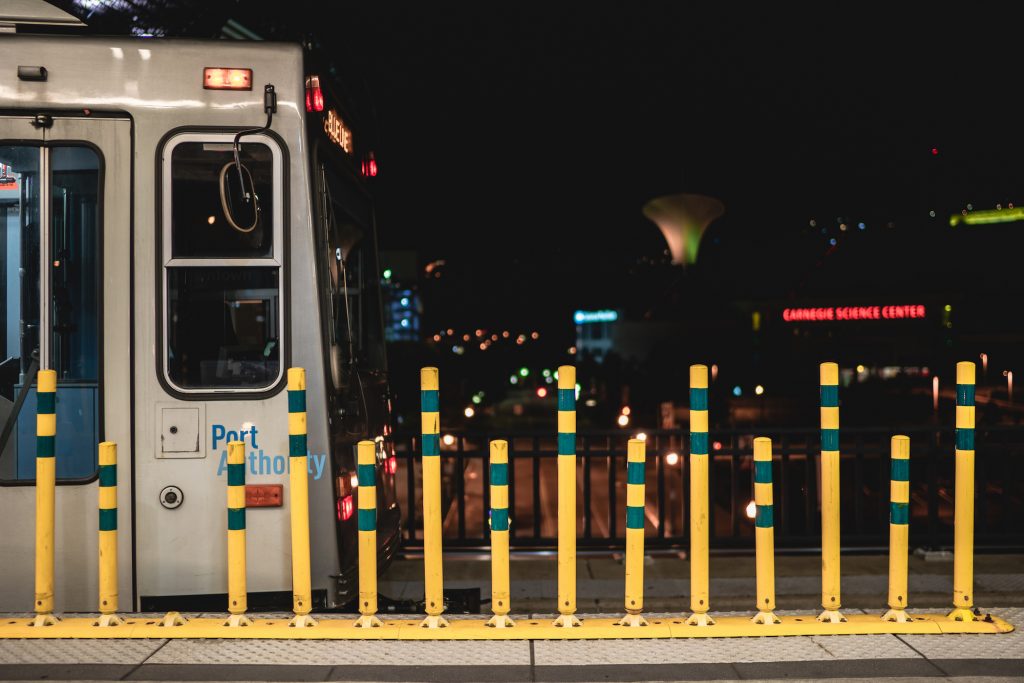The Midnight Train to . . . Anywhere But PIT
Everyone wants light rail to the airport, but federal rules won’t let Terminal Modernization funds pay for it
By Alyson Walls
Published March 4, 2019
Read Time: 3 mins
Driving the Parkway West between Downtown and Pittsburgh International Airport can be a major test of patience for more than 200,000 motorists every day.
On normal days, driving the 15-mile stretch from the Fort Pitt Tunnels to the airport exit can take anywhere from 30 to 45 minutes. But throw in a couple of accidents – a near-daily occurrence – or any type of precipitation, and minor frustrations quickly turn to teeth-grinding road rage.
National studies suggest the problems may be getting worse. Pittsburgh was recently ranked the seventh most congested city in the U.S., idling between San Francisco (eighth) and Seattle (sixth). According to the Inrix rankings, 127 hours are lost in traffic congestion per capita each year, $1,776 is the cost of congestion per driver and the total cost of congestion for the city is $1.2 billion.
With the number of vehicles and drive times increasing, many Pittsburghers are asking what can be done to improve the major artery connecting the airport with Downtown, including building a light rail route.
Airport officials say it is the No. 1 question they get since announcing a $1.1 billion Terminal Modernization Program in 2017 to build a new terminal at PIT.
Frankly, no one likes the answer.
Money for the new terminal comes from funds generated at the airport via airline and user fees, including parking, concessions and revenue from gas drilling. No local tax dollars are being used.
The airport couldn’t build the train even if it wanted to, according to Federal Aviation Administration rules. “The FAA says that money generated at the airport must stay at the airport,” CEO Christina Cassotis said at the recent State of the Airport event, which featured the unveiling of the terminal design concept. “If it doesn’t, it’s considered revenue diversion, and we would be breaking the law. We don’t have an option to fix tunnels and bridges or build a train to the airport.”

The Port Authority of Allegheny County’s ‘T’ line runs through Pittsburgh down into the South Hills. (Photo courtesy of Port Authority)
Cassotis said revenue from the airport will be reinvested into facilities, and the terminal project includes a right-of-way for a future light rail station if it ever becomes a reality.
“We support the idea of light rapid transit or bus rapid transit to the airport, but funding to build the system must come from other agencies,” Cassotis said. “The current design is flexible to accommodate either an LRT or BRT system should such a project occur in the future.”
Over the years, there has been discussion around futuristic transportation options – MagLev in the early 2000s, Hyperloop more recently – but officials say there are no easy fixes.
“There are a lot of challenges in building light rail to the airport, including acquiring the right-of-way; crossing the Ohio River; finding the right balance between ridership and travel time; and, of course, funding,” said Port Authority spokesman Adam Brandolph.
The last study to examine the idea was the Airport Multimodal Major Investment study in 2003, which estimated the cost of the project at $1.275 billion to $1.353 billion (in 2002 dollars). Those estimates are closer to $2 billion today, Brandolph said.
With light rail not yet in the picture, the Port Authority is looking at options that include additional bus routes that could improve connections to the airport and airport-area employers, including a Bus Rapid Transit. Bucking national trends, the Port Authority recently reported that overall ridership has increased. In 2018, the 28X bus route to the airport saw an average of 2,065 rides each weekday, with 1,693 rides on Saturdays and 1,461 rides on Sundays.
Watch
This Next
Read
This Next





